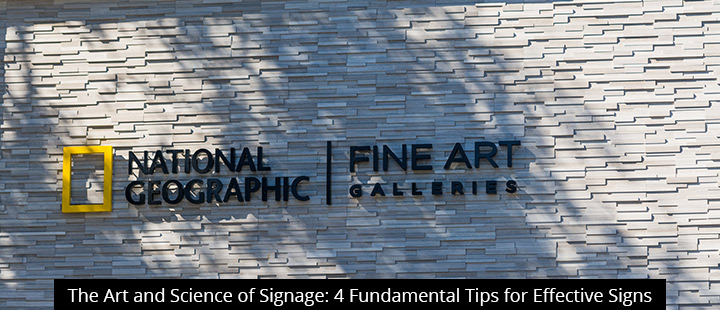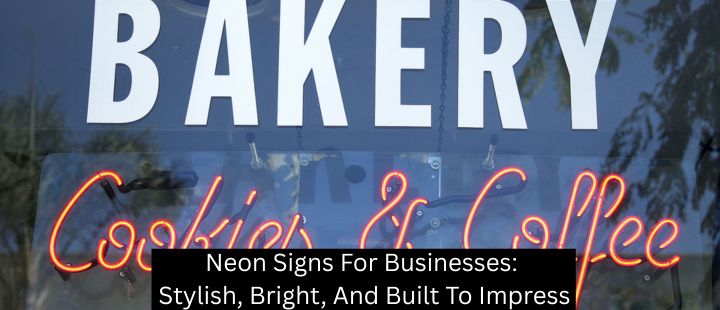Today’s post is meant to level-up your business signage by sharing 4 fundamental tips about the art and science of sign design.
If you’re looking for guidance or inspiration for your next business sign, Signworld can help. Read on to learn a few best practices, and find out how to book a free design consultation with our experts!
The Science Of Sign Location
The Federal Highway Administration (FHWA) has developed a set of scientific principles designed to promote road safety by increasing sign legibility. While this information is intended to be used for highway signs, FHWA research and best practices apply to on-premise signage placement as well.
FHWA researchers emphasize that road signs are rarely viewed on their own. More often than not, they will be seen in the context of other structures or landscaping. As such, they need to be placed in prominent areas with supreme visibility.
This road sign reality is ever more of a factor for on-premise signage, which is naturally located further from clear stretches of highway and typically viewed with a busy city or metropolitan backdrop. In many cases, on-premise signage sits behind obstructions, like cars parked alongside the street.
To mitigate these issues, the FHWA recommends mounting signs up high. This ensures that they’re easy to spot and tough to obstruct. It also allows signs to be read from further away, which dramatically increases readability for drivers. At 55 miles per hour, the viewer is travelling about 80 feet per second–that’s not much time to make an impression!
If your signage is meant to draw drivers off the roadway and into your store, you’ll also need to factor in what the FHWA calls the Decision Sign Distance (DSD), which refers to the amount of time a driver needs to be able to read your sign, decide to take action, and safely complete the maneuver. DSD varies considerably depending on the speed at which the driver is moving, so find out the speed limit of the road you wish to advertise on before you commit to the installation. To calculate your DSD, view the chart on page 3 of this document, or call 888-765-7446 to speak directly with a Signworld partner.C
The Art Of Sign Design: 3 Quick Tips
- Color. Color is a powerful branding tool. Studies by the Signage Foundation (2012) have shown that 80% of brand recognition of a trademark is due to its color. Color is also an evocative attention-grabber. Different colors stir different emotions–yellow produces a sense of alertness; blue is cooling and soothing; green conjures up images of nature. Use these emotional triggers to tell your brand’s story. Our design consultants can help.
- Luminance. Color also determines the percentage of light that your sign reflects when light strikes its surface. This is known as luminance, and it’s a critical factor in getting your sign seen. When signs are internally illuminated, those with a higher luminance percentage shine brighter.
- Here’s a quick reference guide you can use to determine your sign’s luminescence:
- Black — 0 to 5% of light reflected
- Red — 10 to 10%
- Brown — 15 to 30%
- Blue — 25 to 30%
- Green — 25 to 40%
- Yellow — 65 to 70%
- White — 75 to 90%
- Contrast. Proper contrast is crucial for proper readability. In Visual Communication Through Signage, authors Karen Claus and James Claus identified black-on-yellow, black-on-white, yellow-on-black, and white-on-blue as the top 4 most readable color combinations. But don’t feel limited here–a Signworld partner can show you a multitude of high-performance designs.
Perfect Your Sign Design With A Signworld Partner
Visit http://www.signworld.org or call 888-765-7446 to locate a Signworld partner in your area.
References
Signage Foundation Inc. (2012). The Arts & Science of Sign Design. Retrieved from http://www.signresearch.org/wp-content/uploads/Arts-and-Science-of-Sign-Design.pdf




